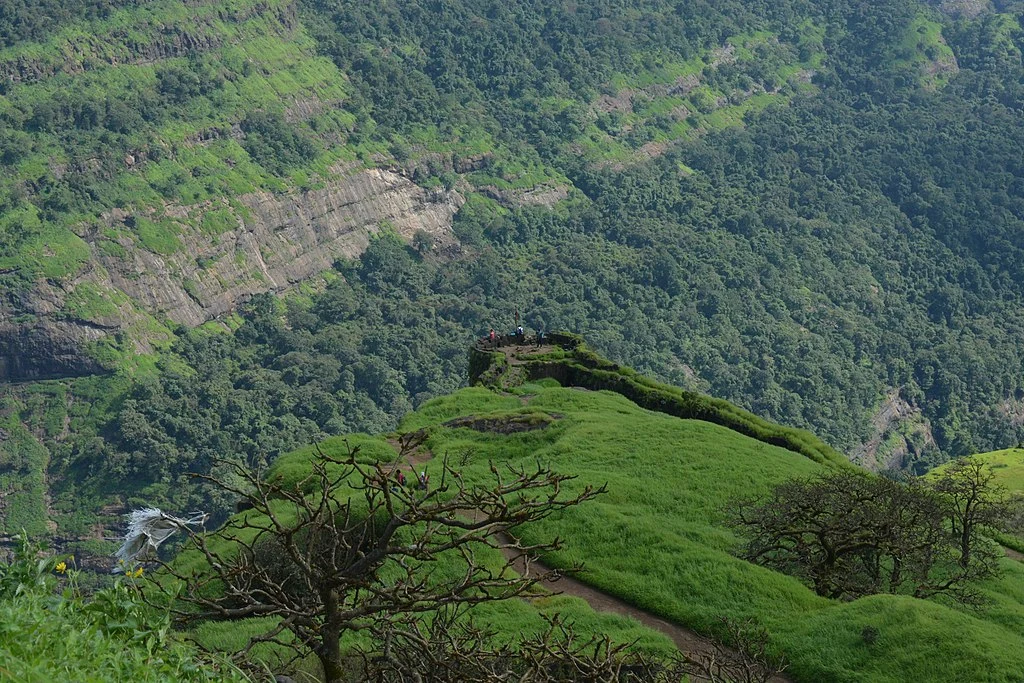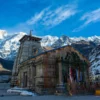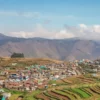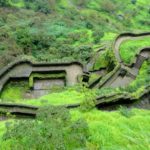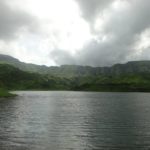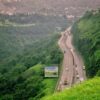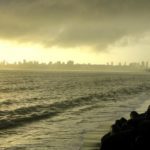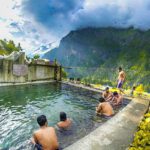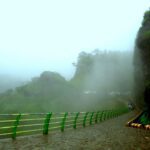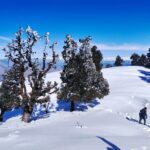Situated between the well-known hill stations of Lonavala and Karjat is the Rajmachi Trek. Trekkers can ascend two forts beginning at the same base hamlet of Udhewadi on this route, which can be accessible from either the Lonavala or the Karjat side.
History of Rajmachi Fort
Rajmachi Fort is situated in the Pune district of Maharashtra, in the Sahyadiri mountains of the Western Ghats. The location is roughly 345 kilometers southeast of Mumbai and is close to the well-known hill station of Lonavala. Among the several medieval forts amid the untamed hills of the Sahyadri mountains (Western Ghats) is Rajamchi Fort (Killa).
A broad machi (plateau) encircles the two Balekillas, Shriwardhan Ballekilla and Manaranjan Balekilla, which are the twin fortifications that make up the fortification.
A little settlement of about 22 dwellings, Udhewadi is located on the machi at the southern base of Rajmachi Fort’s Manaranjan Balekilla. Year-round hikers and wildlife enthusiasts visit this area, which makes it an excellent walking path.
The Angre family, who led the Maratha naval in the eighteenth century, owned the fort, which was crucial to the outcome of the first Anglo-Maratha war.
There are two ways to access Rajmachi Fort from Karjat Taluka in the Raygad District: one is from the Ulhas River’s right bank, and the other is from Salpe hamlet. Both approaches require a roughly 500-meter-long, steep ascent on foot. These two highways are impassable for car traffic.
On the western side of Manaranjan Balekilla, at Jambhul Met, is where the first route arrives at Rajmachi. A different path from Salpe village leads to Rajmachi, which is located at Hijadkhana, northwest of Manaranjan Balekilla.
Although the Satavahanas constructed these forts, Shivaji Maharaj, who ruled over the fort in the fifteenth century, is credited with bringing them to fame. Shivaji Maharaj built multiple constructions inside the fort’s grounds to strengthen and enlarge it. The Marathas and the Mughals fought fights in the forts. The British took control of it later in the 1800s.
Main Attractions
Twin Forts of Manaranjan and Shrivardhan
There’s a viewpoint from the forts. You can see Dhak Bahiri, Bhimashankar, and the Madan Point when looking north. There are views of Kataldhar, Lonavala, and Karjat from the south side.
Along the way, you may see Duke’s nose at the end, Valvan Dam, Tungarli Dam, and the valley that passes past the Hill Stations. The Monkey Hill is also visible from Shrivardhan Fort to the right.
The twin hill stations of Lonavala and Khandala, as well as the Kataldhar Waterfall during the monsoon season, are visible to the southeast (from your left).
Flora and Fauna of the Karjat and Khandala Forests
There is a wealth of vegetation and species along the walk. Numerous birds, lizards, and insects can be found in the forests. In this wooded zone, reports of sightings of the powerful leopards exist.
Choosing the Karjat side or the Lonavala side won’t let you down. Walking the trail entails passing through densely forested areas on both sides of the valley.
Sunrise views and stargazing
You get to see clear night skies because the trip is on the edges of Pune and Mumbai. The Rajmachi Trek is among the best treks for camping and stargazing at night. The hike can be prolonged to last two days. Planning to begin at one end and terminate at the other is also an option.
Don’t miss the breathtaking views of the fort as morning breaks, especially if you are camping along the trek.
Sight of Fireflies
The Rajmachi Trek is well-known for its firefly sightings. These luminous after-sunset bugs will take you to a fantastic place. Plan your hike wisely. Just before the monsoon season, you can witness an abundance of this stunning bioluminescence show.
Places to visit near Rajmachi
Kondane Caves
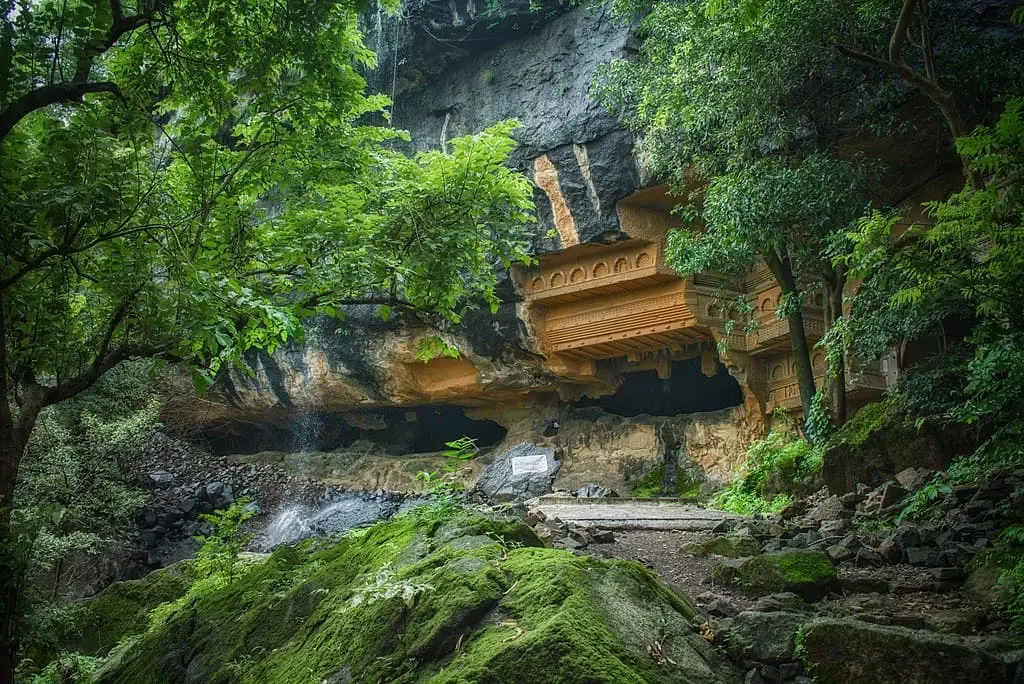
Kondane Caves are historic Buddhist rock-cut caves built out of the mountainside, located about 6 km from Rajmachi Fort. The caves, which are thought to have originated in the first century BC, provide insight into the rich cultural and architectural history of the area.
Bhimashankar Wildlife Sanctuary
Bhimashankar Wildlife Sanctuary, a biodiversity hotspot and sanctuary for nature lovers, is around 30 kilometers from Rajmachi Fort. Numerous bird species, the Indian giant squirrel, leopards, sambar deer, and other flora and fauna may be found in the sanctuary.
To appreciate the natural splendor of the sanctuary, visitors can go on wildlife safaris, nature walks, and treks.
Karla Caves
The Karla Caves are a set of ancient Buddhist rock-cut caves known for their exquisite architecture, and they are located approximately 45 kilometers from Rajmachi Fort. These 2nd-century BC caves have Chaitya halls, statues, and pillars with elaborate carvings.
The majestic Karla Chaitya, a Buddhist prayer hall with exquisite carvings, is the major attraction.
Visapur Fort
Another interesting ancient fort worth seeing is Visapur Fort, which is close to Rajmachi Fort. It provides expansive vistas of the surroundings and an excellent chance for hikers. Adventurers and history lovers love the fort because of its rough terrain and intriguing old remains.
Pawna Lake
Pawna Lake is a calm reservoir with clean waters and lovely surroundings that is around 15 kilometers from Rajmachi Fort. The lake is a great place to camp, go boating, and have picnics because of its serene atmosphere.
In addition to enjoying gorgeous sunsets and relaxing in the great outdoors, visitors can partake in water sports.
Lohagad Fort
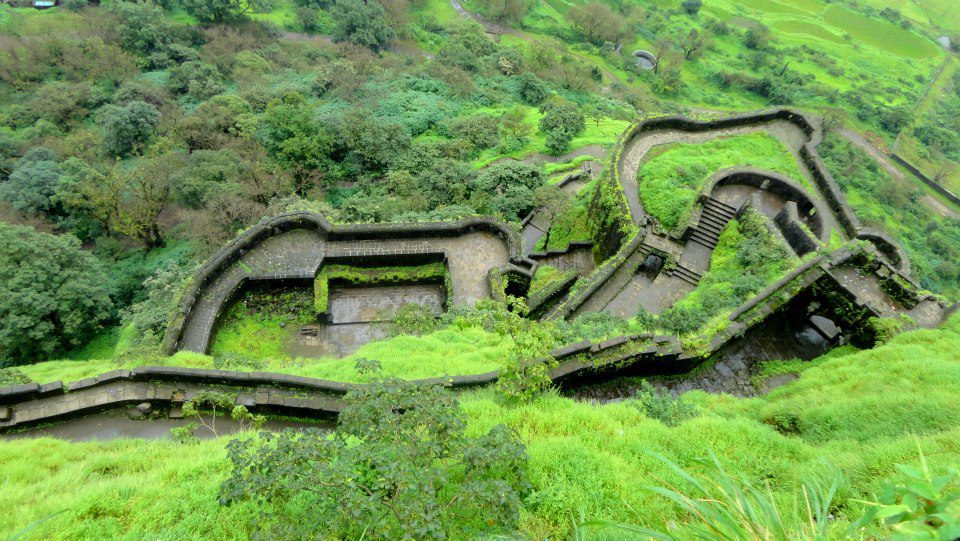
At an elevation of 1,033 meters, Lohagad Fort is a magnificent hill stronghold situated approximately 25 kilometers away from Rajmachi Fort. The fort is well-known for its historical significance, opulent architecture, and stunning vistas of the Sahyadri Mountains.
Best Time to do the Rajmachi Trek
The Rajmachi Trek is possible throughout the year. The advantages and appeal of this walk vary depending on the month you hike, just like other treks. These are the specifics of what you might expect to see while trekking in these months.
The greatest times to see fireflies on the journey are in May and June. These bioluminescent beetles have a two-month lifespan. They will transport you to a magical place as they light brightly in the evenings and at night.
During the monsoon season, when trekking is popular, you can witness the allure of verdant valleys dotted with cascading waterfalls.
During the walk, the hue completely changes after the monsoon and during the winter. There’s nothing quite like trekking for the color of the fall foliage and unobstructed views.
How to Reach
By own vehicle
Rajmachi is an easily accessible trek that may be done with a car. Udhewadi is where the hike begins. Approximately 100 kilometers from Mumbai, this is your starting place or base village.
The following is how to go to Mumbai if you don’t have access to Google Maps: From Mumbai, travel to Panvel. After leaving Panvel, proceed along the Mumbai-Pune route till you arrive in Khandala.
By Train
The Express Train from Mumbai to Lonavala Railway Station is the most convenient route to the base.
Depending on whether you plan to do a day hike, a night trek, or a scheduled journey, reserve first class (for scheduled travel) or general class (for backpackers) tickets for the express trains to Lonavala.
Trek Itinerary
Day 1: Travel to Udhewadi village after arriving in Lonavala to begin the Rajmachi Trek.
A great weekend hike from Mumbai or Pune is the Rajmachi Trek. After a briefing and introduction session, meet our crew when you arrive in Lonavala by bus or rail.
From there, go to the Rajmachi Trek starting site at Udhewadi village Y intersection. Rajmachi Fort Trek is well-known for its nighttime Rajmachi Fireflies Trek.
Get to Rajmachi Fort, take a look around, enjoy a JAM session and a campfire in the evening, and spend the night in campers.
Day 2: Drive to Karjat station and trek from Rajmachi Fort to Karjat.
Get up early, eat a hearty breakfast, and then proceed to Karjat at Kondivade Village along the Rajmachi Trek route. On the way, you can also explore the Kondhana Caves.
The Rajmachi Trek route is home to many waterfalls and a verdant landscape during the monsoon season. However, be cautious when trekking as the path can become somewhat slick.
Our journey concludes when you get to Karjat.
Things to Carry
Stuff packed in a sturdy knapsack; because the monsoon is predicted to bring heavy rainfal pack wisely.
Windbreaker, raincoat, or poncho (avoid umbrellas only during rains)
A full change of clothes, a raincoat, a lightweight jacket, and socks in case they’re needed
A water bottle (1-2 litres)
Any personal medications
Comfortable clothing (full sleeves suggested) for trekking
Good athletic/trekking shoes (sandals, flip-flops, and floaters are not allowed on the trek)
A power bank to charge your phone because many locations don’t have electricity
Torchlight for events and night treks ✓ Identity verification required
Kit for personal hygiene.
Light Snacks: Fruit cookies, chocolate, and dry fruits.
Conclusion
In the warm embrace of the Sahyadri highlands, Rajmachi Fort cordially invites you to go out on an amazing experience via nature, history, and adventure. It is a living history of the Maratha spirit and the heritage of Chhatrapati Shivaji Maharaj, not merely a fort. You are taking part in a timeless tale of bravery, tenacity, and the continuing charm of Maharashtra’s past as you make your way through its difficult routes and investigate its historic buildings.
Featured Image Courtesy: BHARATHGOTTEMUKKULA
![]()

